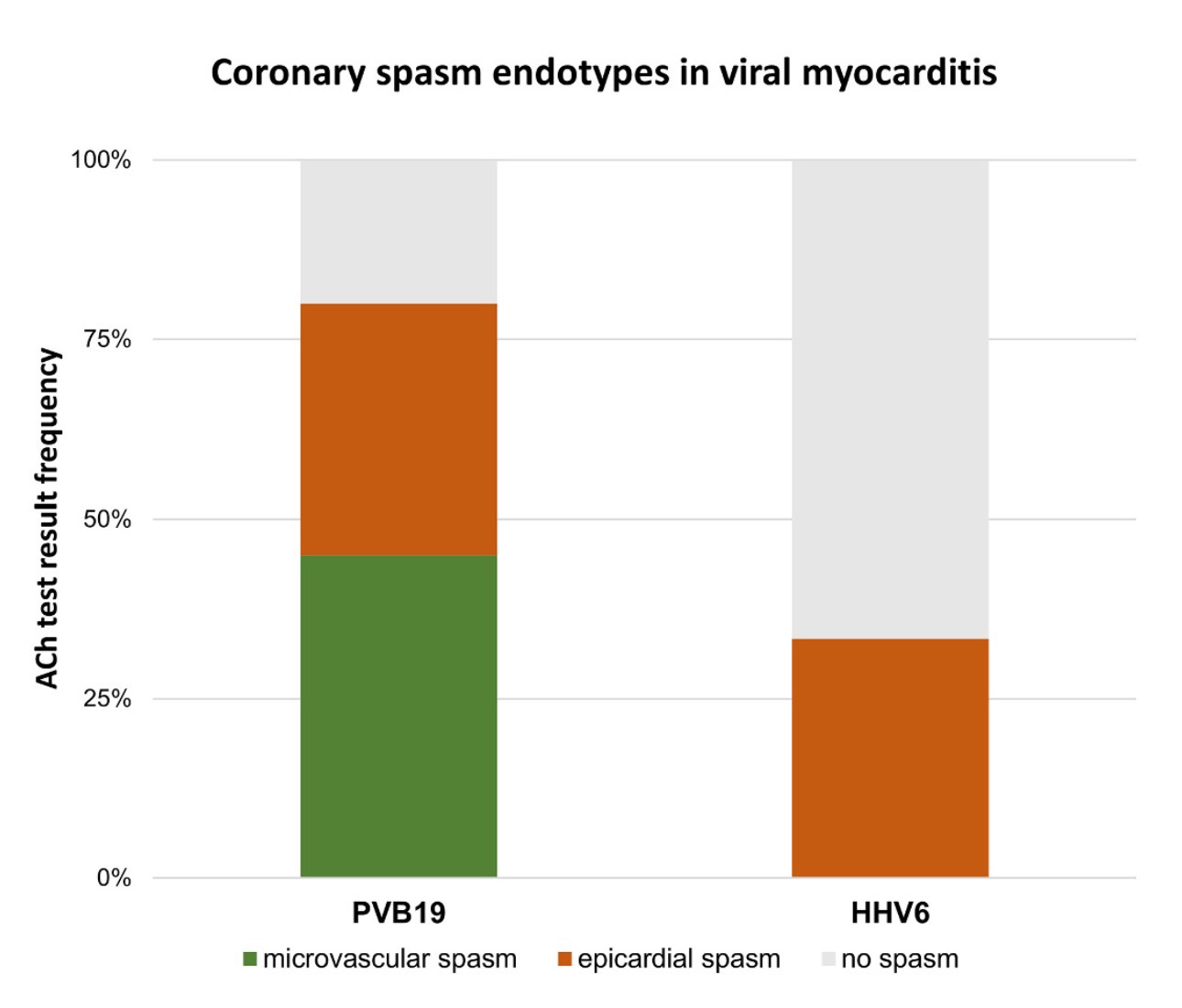Many past studies have found evidence of both HHV-6 and parvovirus B19 in the myocardial tissue of some patients with acute myocarditis, heart failure and dilated cadiomyopathy. Chest pain mimicking the pain of atherosclerotic coronary artery disease is a common symptom in people with myocarditis. A team from Stuttgart and Tubingen Germany speculated that the chest pain might be caused not by disease of the myocardial tissue but rather by spasm of the coronary arteries in people with viral myocarditis. To collect evidence of spasm, they performed an established test for provoking spasm: the injection of acetylcholine into the coronary arteries.
A total of 618 patients with suspected myocarditis, and without atherosclerotic plaques in their coronary arteries by angiography, underwent endomyocardial biopsy. Of the 618, 114 (18%) had biopsy evidence of myocarditis and a viral genome present in the myocardial tissue. Of these 114, 34 had the testing for coronary artery spasm. (It is unclear how these 34 were chosen, and how representative they were of the larger group of 114.)

Figure 1. Frequency of coronary spasm of small (microvascular) vessels and larger (epicardial) vessels in people with myocarditis associated with parvovirus B19 (PVB19) and human herpesvirus 6 (HHV6). ACh = acetylcholine.
Two viruses were found in myocardial tissue much more commonly than others: parvovirus B19 (in 59% of those with viral myocarditis) and HHV-6 (in 26% of those with viral myocarditis). Spasm of the larger (epicardial) coronary arteries was documented in 29% of the patients tested, and spasm of the microcirculation was documented in 32%. While both viruses were associated with spasm of the larger coronary arteries, only parvovirus B19 was associated with spasm of the microcirculation (occurring in 45% of patients with parvovirus B19 and none of the patients with HHV-6), as summarized in Figure 1, below.
Both parvovirus B19 and HHV-6 have been shown capable of infecting the endothelial cells that line arteries, so it is plausible that the viruses could simultaneously cause both coronary artery spasm and myocarditis.
Read the full article: Seitz 2022

